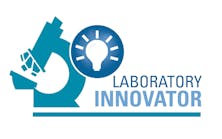It is clear that healthcare systems in the United States have entered a new era of change. This transformation is being accelerated not only by the new healthcare reform legislation, but also by the increased burdens of rising costs due to a surge in chronic disease prevalence and the expansion of care for an aging population. This expansion will continue to compel payers, both public and private, to drive down costs in every way possible. We see this in recent Medicare policies which show a focus on reducing diagnostics costs, either directly through reimbursement or through reducing utilization.1,2
This is also a time of unprecedented advances in laboratory diagnostics. Addressing these challenges and marshalling this opportunity is something the healthcare and laboratory community must come together to accomplish.
As a result, labs need to look for additional opportunities to operate more efficiently. Conserving costs and maintaining quality while absorbing increases in testing may be accomplished through consolidation, standardization, testing rationalization, and process efficiencies.
Consolidation can be achieved by moving from full service testing capabilities at each hospital laboratory to a “hub-and-spoke” approach. The hub-and-spoke approach uses a main site to provide full testing capabilities while satellite sites provide urgent care testing services. Staffing efficiencies, reduced quality control, and lower capital investment are some key benefits achieved in the hub-and-spoke approach.
Following consolidation, standardization, also known as harmonization, is the next logical step to drive efficiency. Standardization is achieved by using common processes and systems across the entire hospital network. The combination of both standard processes and, most important, common systems produces efficiencies among lab staff and commutable results (that is, results that can be exchanged or converted), both of which provide for consistency and could help physicians deliver more efficient patient care.
The combination of consolidation and standardization is the basis for labs to drive efficiency while reducing errors and enhancing quality, all of which are critical factors for outcomes-based reimbursements required by accountable care organizations.
More than ever before, the ways that healthcare providers interact with patient data need to evolve to meet the current demands of patients, while minimizing the increase in costs. One emerging trend among labs is the process of testing rationalization. Labs are focusing on developing protocols that ensure testing requested by physicians is necessary and will provide value to physicians in the diagnosis, treatment or monitoring of a patient.
Finally, labs are also optimizing process and information flow to further drive efficiency. For example, enabling technologies such as automation have helped address some process efficiencies. Labs using automation can achieve 20% to 40% higher productivity than those without, allowing them to process tests with fewer personnel while handling increased volumes.3 This is especially important as labs may face a coming shortage of clinical laboratory professionals.There is also room for further advances, such as evolving capabilities in optimization via Lean and Six Sigma process improvement principles, which seek to eliminate eight kinds of waste: defects, overproduction, waiting, non-utilized talent, transportation, inventory, motion and extra-processing. By coupling these principles with IT solutions, labs of the future—the very near future—will build further efficiencies into their framework.
One thing remains the same in an era when technological, regulatory, and reimbursement models are changing: the clinical laboratory continues to play a vital role in delivering essential healthcare services. Labs need to continue to adapt to keep pace with increasing patient volumes, stable or decreasing budgets, and the ongoing need to improve the quality of care. As the healthcare environment evolves, the implementation of the principles described offers
labs the opportunity to provide value in the diagnosis, treatment
and monitoring of patients, while simultaneously helping their institutions operate more efficiently and effectively.
Greg Ahlberg serves as Divisional Vice President, Diagnostics, U.S. Commercial Operations, for Abbott. His areas of expertise include Finance, Customer Service, Turnarounds, Business Development, Strategic Sales & Market Planning, and Supply Chain Management.
References
- Final policy and payment changes to the Medicare physician fee schedule for calendar year 2014. Centers for Medicare and Medicaid Services press release, Nov. 27, 2013. www.cms.gov/Newsroom/MediaReleaseDatabase/Fact-Sheets/2013-Fact-Sheets-Items/2013-11-27-2.html. Accessed Dec. 16, 2013.
- CMS issues hospital outpatient department and ambulatory surgical center policy and payment changes for 2014. Centers for Medicare and Medicaid Services press release, Nov. 27, 2013. www.cms.gov/Newsroom/MediaReleaseDatabase/Fact-Sheets/2013-Fact-Sheets-Items/2013-11-27-3.html. Accessed Dec. 16, 2013.
- Rajkovich D, Mercer W. The impact of automation on laboratory operations. CHI solutions 2009;(7)1-3. http://www.chisolutionsinc.com/images/cmsupload/file/2009_07_Automation%20E-Postcard%20Article.pdf. Accessed Feb. 11, 2014.





